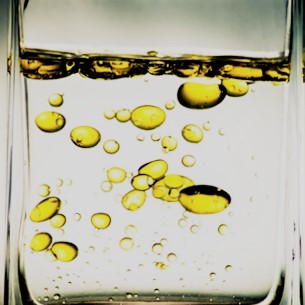stability of emulsion: A stable emulsion may be define as a system in which the gloubles retain their initial character and remain uniformly distributed throught the contineous phase. Various deviation of these may leads to instability of emulsions.

The instability of emulsion is discussed in following headings.
1.Creaming of emulsion:
- Creaming can be defined as formation of thick concentrated thick layer of dispersed phase or glouble in either upper or lower layers of the emulsion.
- Creaming is not a serious unstable condition because the cream obtained can be easily redispersed after shaking.
- Keep creaming for longer duration of tine leads to cracking of emulsion.
- Creaming can be well explained through stoke’s equation.

v= rate of creaming, d= diameter of the dispersed gloubles, ps and po = densities of the dispersed gloubles and dispersion medium, g=acceleration due to gravity and no= viscosity of dispersion medium.
- The rate of creaming is directly proportional to the diameter of the dispersed gloubles. As the size of the dispersed gloubles increases the rate of creaming increases resulting in the formation of undesirable cream. This can be over come by the controling the particle size of the dispersed particle to the desired size range (5-50um) using suitable method and in the large scale using the homogenisers.
- The rate of creaming is directly proportional to the density difference between the dispersed phase and dispersion medium. As the density difference between the dispersed phase and dispersion medium, the rate of creaming increases. This can be controlled by reducing density difference nearer to 0 by adding suitable additives such as simple syrup, glycerin.
- The rate of creaming is indirectly proportional to the viscosity of the dispersion medium. As the viscosity decreases the rate of creaming increases. This can be overcome by using suitable viscosity thicking agents such as sodium alginates, tragcanth and methyl cellulose.
2.Cracking of emulsion:
- Cracking of emulsion can be defined as coalascence of the dispersed gloubles and form a separate later or separated of oil and water phase completely.
- Cracking is serious unstable condition for emulsion because redispersion of separated later is not possible even after vigarous shaking.
- Cracking can be caused by any chemical, physical or biological effect that changes the nature of the interfacial film of an emulsifying agents tends to make unstable.
- The cracking of emulsion can be discussed as follows:
- Addition of opposite type of emulsifying agents: Soap of monovalent metals produce o/w emulsion while soap of divalent metal produce w/o type of emulsion. Addition of divalent soap into monovalent or visa-versa.
- Addition of anionic and cationic emulsifying agents in same emulsion may leads to cracking of emulsions, because they are mutually incompatible.
- Decomposition or precipitation of emulsifying agents: Alkali soap are decomposed by acids, hence addition of acetic acids solution to turpentine oil liniments results precipitation of soft soap soap leads to cracking of emulsions.
- Addition of alcohol to the emulsions prepared with gums and the proteins results precipitation of emulsifying agents leads to cracking of emulsion, because they are incompatible with alcohol.
- Microbial action: Emulsion not untended for immediate use should contain preservative to prevent the growth of micro-organism and bacteria this can destroy the emulsifying agents and cracking the emulsion.
- Creaming: Keeping creaming condition of emulsion for longer duration of time may leads to cracking of emulsion.
3.Phase inversion:
Phase inversion is the results of inverting o/w emulsion into w/o emulsion or w/o emulsion into o/w emulsion. It is mainly due to following reasons:
- Addition of monovalent metal soaps to w/o emulsion or addition of Divalents soaps to o/w emulsion results in phase inversion ex an an o/w emulsion is stabilized with sodium stearate can be inverted to the w/o emulsion by adding calcium chloride a similar results results may also observed when calcium salts are added to triethanolamine soaps.
